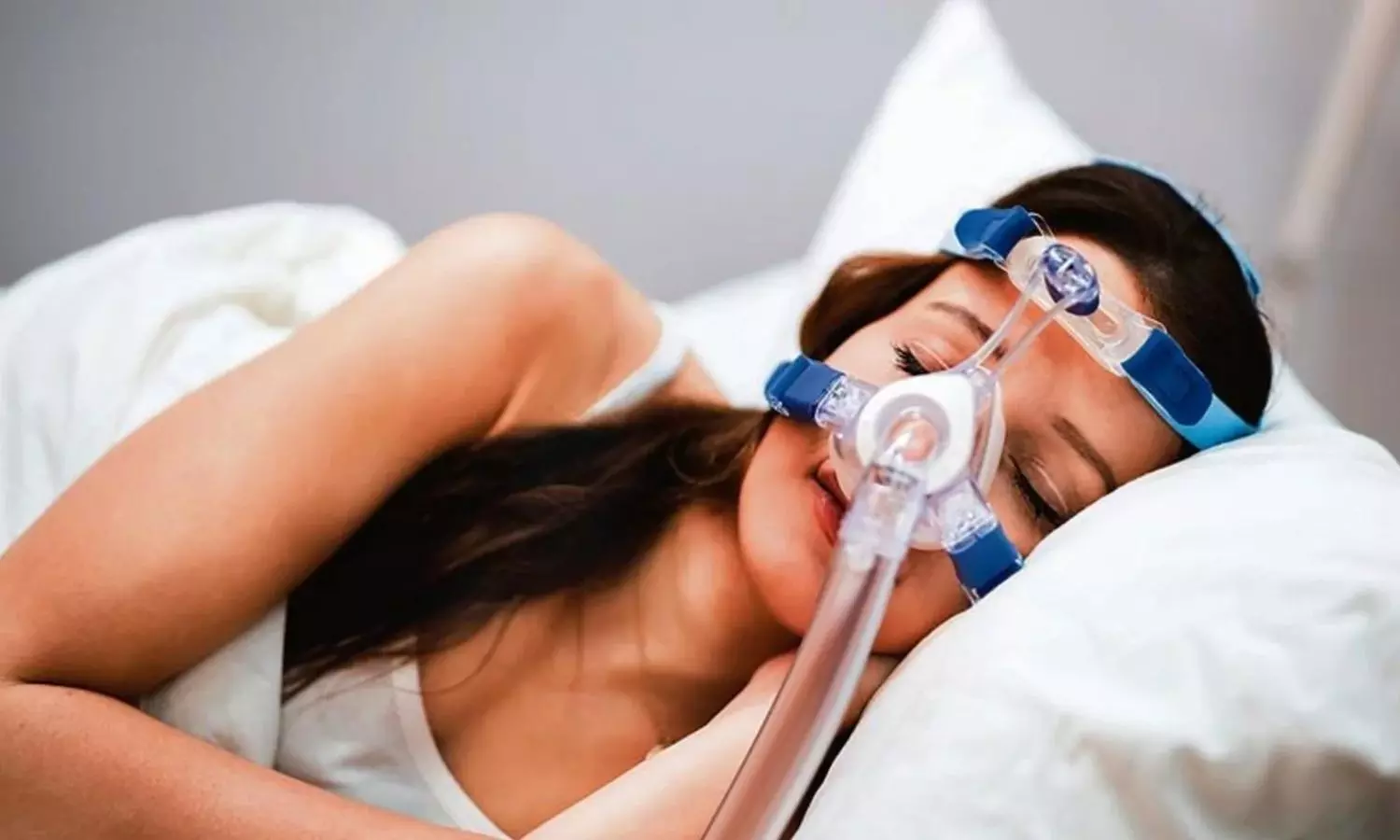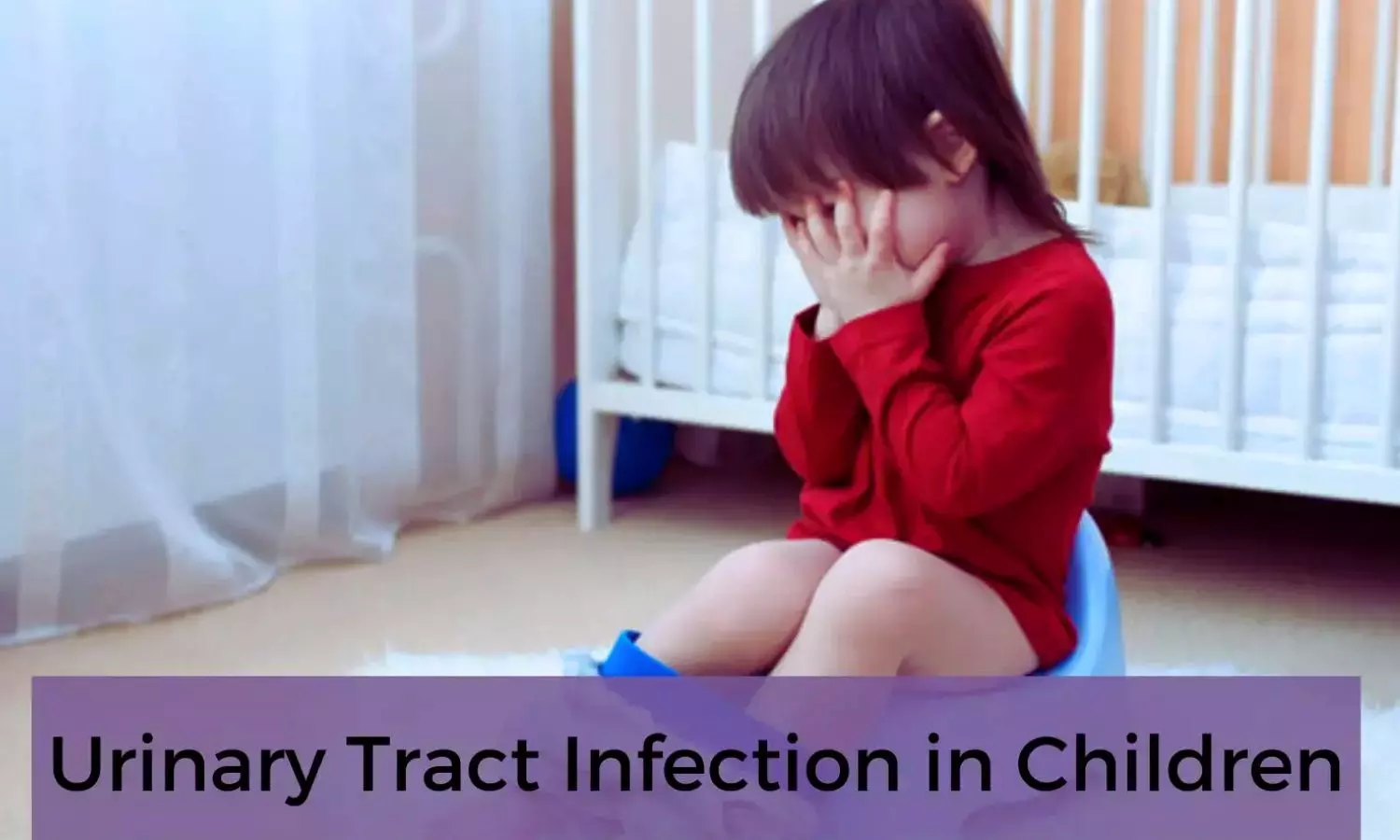Keurig K-Cups recalled due to potential ink contamination
Powered by WPeMatico
Powered by WPeMatico
Powered by WPeMatico
Powered by WPeMatico

An analysis of studies incorporating data from almost 30 million people has highlighted the role that air pollution-including that coming from car exhaust emissions – plays in increased risk of dementia.
Dementias such as Alzheimer’s disease are estimated to affect more than 57.4 million people worldwide, a number that is expected to almost triple to 152.8 million cases by 2050. The impacts on the individuals, families and caregivers and society at large are immense.
While there are some indications that the prevalence of dementia is decreasing in Europe and North America, suggesting that it may be possible to reduce the risk of the disease at a population level, elsewhere the picture is less promising.
Air pollution has recently been identified as a risk factor for dementia, with several studies pointing the finger at a number of pollutants. However, the strength of evidence and ability to determine a causal effect has been varied.
In a paper published today in The Lancet Planetary Health, a team led by researchers at the Medical Research Council (MRC) Epidemiology Unit, University of Cambridge, carried out a systematic review and meta-analysis of existing scientific literature to examine this link further. This approach allowed them to bring together studies that on their own may not provide sufficient evidence, and which sometimes disagree with each other, to provide more robust overarching conclusions.
In total, the researchers included 51 studies, including data from more than 29 million participants, mostly from high-income countries. Of these, 34 papers were included in the meta-analysis: 15 originated in North America, 10 in Europe, seven in Asia, and two in Australia.
The researchers found a positive and statistically-significant association between three types of air pollutant and dementia. These were:
According to the researchers, for every 10 micrograms per cubic meter (μg/m³) of PM2.5, an individual’s relative risk of dementia would increase by 17%. The average roadside measurement for PM2.5 in Central London in 2023 was 10 μg/m³.
For every 10 μg/m3 of NO2, the relative risk increased by 3%. The average roadside measurement for NO2 in Central London in 2023 was 33 µg/m³.
For each 1 μg/m³ of soot as found in PM2.5, the relative risk increased by 13%. Across the UK, annual mean soot concentrations measured at select roadside locations in 2023 were 0.93 μg/m³ in London, 1.51 μg/m³ in Birmingham and 0.65 μg/m³ Glasgow.
Senior author Dr Haneen Khreis from the MRC Epidemiology Unit said: “Epidemiological evidence plays a crucial role in allowing us to determine whether or not air pollution increases the risk of dementia and by how much. Our work provides further evidence to support the observation that long-term exposure to outdoor air pollution is a risk factor for the onset of dementia in previously healthy adults.
“Tackling air pollution can deliver long-term health, social, climate, and economic benefits. It can reduce the immense burden on patients, families, and caregivers, while easing pressure on overstretched healthcare systems.”
Several mechanisms have been proposed to explain how air pollution may cause dementia, primarily involving inflammation in the brain and oxidative stress (a chemical process in the body that can cause damage to cells, proteins, and DNA). Both oxidative stress and inflammation play a well-established role in the onset and progression of dementia. Air pollution is thought to trigger these processes through direct entry to the brain or via the same mechanisms underlying lung and cardiovascular diseases. Air pollution can also enter circulation from the lungs and travel to solid organs, initiating local and wide-spread inflammation.
The researchers point out that the majority of people included in the published studies were white and living in high-income countries, even though marginalised groups tend to have a higher exposure to air pollution. Given that studies have suggested that reducing air pollution exposure appears to be more beneficial at reducing the risk of early death for marginalised groups, they call for future work to urgently ensure better and more adequate representation across ethnicities and low- and middle-income countries and communities.
Joint first author Clare Rogowski, also from the MRC Epidemiology Unit, said: “Efforts to reduce exposure to these key pollutants are likely to help reduce the burden of dementia on society. Stricter limits for several pollutants are likely to be necessary targeting major contributors such as the transport and industry sectors. Given the extent of air pollution, there is an urgent need for regional, national, and international policy interventions to combat air pollution equitably.”
Further analysis revealed that while exposure to these pollutants increased the risk of Alzheimer’s disease, the effect seemed stronger for vascular dementia, a type of dementia caused by reduced blood flow to the brain. Around 180,000 people in the UK are thought to be affected by this type of dementia. However, as there were only a small number of studies that examined this difference, the researchers did not class it as statistically significant.
Joint first author Dr Christiaan Bredell from the University of Cambridge and North West Anglia NHS Foundation Trust said: “These findings underscore the need for an interdisciplinary approach to dementia prevention. Preventing dementia is not just the responsibility of healthcare: this study strengthens the case that urban planning, transport policy, and environmental regulation all have a significant role to play.”
Reference:
Clare B Best Rogowski, Long-term air pollution exposure and incident dementia: a systematic review and meta-analysis, The Lancet Planetary Health, DOI: 10.1016/S2542-5196(25)00118-4
Powered by WPeMatico

Japan: A recent case study published in BMC Nephrology has highlighted a rare instance of peritoneal dialysis (PD)-associated polymicrobial peritonitis that developed with a delayed onset following a root canal procedure.
The researchers note that peritonitis remains a major concern in PD patients, increasing the risk of catheter removal and mortality. While invasive procedures, including dental treatments, are known to cause transient bacteremia, documented cases of PD-associated peritonitis due to dental procedures are limited. Furthermore, polymicrobial peritonitis following a dental procedure has not been reported until now.
The case described by Yujiro Maeoka, Department of Nephrology, Hiroshima University Hospital, Minami-ku, Hiroshima, Japan, and colleagues involved a 60-year-old man undergoing PD admitted with acute lower abdominal pain. Examination revealed peritonitis caused by three viridans group streptococci species—Streptococcus oralis, Streptococcus vestibularis, and Streptococcus salivarius. Notably, the infection appeared nine days after the patient had undergone root canal treatment for a decayed upper molar. This delayed onset contrasts with the typical peritonitis onset following invasive procedures, which usually occurs within a week.
Despite the polymicrobial nature of the infection, the patient responded well to antibiotic therapy, and catheter removal was not necessary. His condition stabilized with intravenous cefepime, later switched to ceftriaxone, and a two-week antibiotic regimen as per the 2022 International Society for Peritoneal Dialysis (ISPD) guidelines.
Upon admission, the patient showed abdominal tenderness and distension but no signs of exit-site or tunnel infection. Blood tests revealed an elevated white blood cell count and C-reactive protein (CRP) levels, confirming peritonitis. The PD effluent was cloudy, with a high white blood cell count of 7,500/µL (neutrophils: 93.2%). Further cultures identified S. oralis and S. salivarius on day 1 and S. vestibularis on day 5.
The patient’s recent dental history was reviewed to determine the source of the infection. He had undergone root canal treatment nine days before hospitalization without receiving prophylactic antibiotics. A dental examination confirmed successful treatment, with no active infection in the oral cavity. Since all detected bacterial species were susceptible to standard antibiotics, cefepime was de-escalated to ceftriaxone on day 8. The infection resolved without complications, and the patient was discharged on day 16.
“This case highlights the potential risk of delayed-onset PD-associated peritonitis following dental procedures, highlighting the importance of extended post-procedural monitoring,” the authors stated. They further emphasized that since peritonitis developed beyond the typical seven-day window, careful observation for at least 10 days is recommended.
They noted that the study also raises concerns about whether prophylactic antibiotics should be considered for PD patients undergoing invasive dental treatments.
“Further research is essential to establish guidelines that can help prevent similar occurrences in the future,” they concluded.
Reference:
Kubota, S., Maeoka, Y., Okimoto, K. et al. Peritoneal dialysis-associated polymicrobial peritonitis with slow onset after root canal treatment: the first case and review of the literature. BMC Nephrol 26, 137 (2025). https://doi.org/10.1186/s12882-025-04054-x
Powered by WPeMatico

The FDA has approved delgocitinib cream as a topical treatment for moderate-to-severe chronic hand eczema (CHE) in adults, according to the manufacturer’s announcement on July 23, 2025.
ANZUPGO is an innovative steroid-free, topical pan-Janus kinase (JAK) inhibitor for adults with CHE.1 ANZUPGO inhibits the JAK-STAT pathway, specifically blocking the activity of JAK1, JAK2, JAK3, and tyrosine kinase 2 (TYK2), and suppresses the various inflammatory responses that play a key role in the onset and subsequent flares of CHE.
The FDA approval of ANZUPGO marks a significant milestone in LEO Pharma’s strategy to expand its presence in the U.S. market and deliver purposeful innovation in skin health. In preparation for bringing ANZUPGO to the U.S. patients, LEO Pharma has significantly upscaled its operations across key functions – including a 50% increase in the sales force.
“ANZUPGO is a good example of how we transform a real need in the market into medicines that can help make a difference for people living with serious skin diseases such as CHE,” said Christophe Bourdon, CEO, LEO Pharma. “After successfully launching ANZUPGO in several countries, we’re proud to now bring this innovation to adult patients with moderate-to-severe CHE in the United States. The approval of ANZUPGO reinforces our commitment to investing in difficult-to-treat skin conditions to deliver new treatments to patients where the need is greatest. We’re truly grateful to the patients and physicians who participated in our studies and helped make this approval possible.”
CHE is a highly debilitating inflammatory skin disease that affects approximately one in ten adults worldwide, causing itchy, painful, blistered, or swollen skin that can interfere with daily activities. The FDA approval of ANZUPGO provides adults in the U.S. living with moderate-to-severe CHE with the first and only treatment option specifically approved for this skin disease, just as it will be the first and only topical pan-JAK-inhibitor on the U.S. market.
“Chronic hand eczema can be a very difficult disease for adults to manage, especially given the lack of treatment options in the U.S. until now,” said Robert Spurr, EVP and President, North America, LEO Pharma. “As the first and only FDA-approved treatment specifically for CHE in the U.S., ANZUPGO further establishes our company’s real commitment to bringing treatments to market that address unmet needs in medical dermatology.”
The FDA approval is the latest regulatory milestone for ANZUPGO, following the European Commission (EC) approval in 2024 and several launches internationally, including Germany, Switzerland, the United Kingdom and the United Arab Emirates.
ANZUPGO® (delgocitinib) cream is currently FDA approved in the U.S. as the first and only treatment for chronic hand eczema (CHE). ANZUPGO is also approved in the European Union, United Kingdom, Switzerland and the United Arab Emirates for the treatment of moderate-to-severe chronic hand eczema (CHE) in adults for whom topical corticosteroids are inadequate or not advisable. ANZUPGO cream is also under investigation in other markets. Use of ANZUPGO in combination with other JAK inhibitors or potent immunosuppressants is not recommended by the U.S. FDA.
ANZUPGO cream is a topical pan-Janus kinase (JAK) inhibitor for the treatment of moderate-to-severe CHE in adults. It inhibits the activation of JAK-STAT signaling, which plays a key role in the pathogenesis of CHE.
In 2014, LEO Pharma A/S and Japan Tobacco Inc. (JT) entered into a license agreement in which LEO Pharma gained exclusive rights to develop and commercialize delgocitinib for topical use in dermatological indications worldwide, excluding Japan, where JT retains rights.
Chronic hand eczema (CHE) is defined as hand eczema (HE) that lasts for three or more months or relapses twice or more within a year. HE is one of the most common skin disorders of the hands and in a substantial number of patients, it can develop into a chronic condition. CHE affects approximately one in ten adults worldwide. It is a fluctuating disorder characterized by itch and pain, and patients may experience signs such as erythema, scaling, lichenification, hyperkeratosis, vesicles, edema, and fissures on hands and wrists.6 The pathophysiology is characterized by skin barrier dysfunction, inflammation of the skin, and alterations of the skin microbiome.
CHE has been shown to cause psychological and functional burdens that impact patient quality of life, with approximately 70% of individuals who live with severe CHE admitting to problems in performing everyday activities. Furthermore, careers and earning potential have also been shown to be impacted by the burden of living with CHE.
Powered by WPeMatico

Topline results from a second phase 3 trial of AD109-an investigational oral therapy combining aroxybutynin and atomoxetine-were announced for patients with obstructive sleep apnea (OSA). AD109 aims to enhance oxygenation during sleep by improving upper airway muscle tone through its dual mechanism: antimuscarinic and norepinephrine reuptake inhibition.
LunAIRo was a 12-month study that evaluated the efficacy and safety of AD109 in adults with mild, moderate and severe OSA, across a wide range of weight classes, with the primary endpoint determined at 26 weeks.
The LunAIRo trial met its primary endpoint, demonstrating clinically meaningful and statistically significant reductions in airway obstruction at 26 weeks. Participants treated with AD109 achieved a mean reduction in AHI of 46.8% from baseline at week 26 (vs 6.8% with placebo; p<0.001). The reduction in AHI remained significant at end of study (week 51, p<0.001). AD109 was generally well-tolerated, with the most common treatment-emergent adverse events being mild or moderate in severity, and consistent with prior studies. No serious adverse events related to AD109 were reported in the LunAIRo trial.
The LunAIRo topline results align with the positive topline results previously reported from Apnimed’s SynAIRgy Phase 3 clinical trial, which the Company believes support the safety and efficacy of AD109 in treating adults with mild, moderate and severe OSA, subject to review by FDA.
“With two large Phase 3 studies now demonstrating a consistent and significant efficacy profile for AD109, we are closer to delivering the first oral pharmacotherapy for over 80 million U.S. adults with OSA. Given the scale of unmet need in OSA, where the majority of patients remain untreated, we believe AD109, as a simple once-daily oral drug, has the potential to expand and reshape the treatment landscape, which would represent a significant commercial opportunity for Apnimed. Based on the Phase 3 data from LunAIRo and SynAIRgy, Apnimed plans to file a New Drug Application (NDA) with the U.S. FDA in early 2026. As we prepare for FDA regulatory filing and commercialization of AD109, we’re focused on ensuring we have the capabilities, people, and partnerships in place to bring this innovative drug to patients suffering from OSA and the clinicians who treat them,” said Larry Miller, MD, Chief Executive Officer of Apnimed. “We’re especially grateful to the study participants, the investigators, and the study sites that contributed to our AD109 Phase 3 clinical program. Their partnership and trust have been instrumental in advancing a new approach to OSA—one that has the possibility of changing how this chronic disease is treated.”
Select Additional Results
In addition to meeting the primary endpoint, AD109 demonstrated improvements in additional topline secondary and exploratory endpoints in the LunAIRo study, including:
• Meaningful improvements in oxygenation as assessed by reductions in hypoxic burden (p<0.0001) and oxygen desaturation index (p<0.001) at week 26 and at end of study (week 51)
• A significant proportion of participants achieved a ≥50% reduction in AHI from baseline at week 26 (p<0.0001) and at week 51 (p<0.0001)
• AD109 improved OSA disease severity for 45.0% of participants at week 26, and 47.5% at week 51
• AD109 achieved OSA complete disease control (AHI<5) for 22.9% of participants at week 26, and 22.5% at week 51
Analysis of additional objective, subjective and exploratory endpoints and safety data from the LunAIRo and SynAIRgy studies are ongoing and will be reported at a medical congress later this year.
“The consistency of the promising findings across both the LunAIRo and SynAIRgy trials provides robust clinical evidence that AD109 meaningfully improved sleep apnea severity and oxygenation,” said Sanjay Patel, MD, study chair for the LunAIRo clinical trial and Director, UPMC Comprehensive Sleep Disorders Clinical Program in Pittsburgh, Pennsylvania. “This is the first time we’ve seen a once-daily oral medication demonstrate such significant, durable effects in a broad patient population with OSA.”
“The vast number of people currently living with untreated OSA points to a need for additional treatment options. As someone living with OSA, the LunAIRo study gives me hope that novel pharmacotherapy treatments are on the horizon and can potentially improve so many lives,” said Emma Cooksey, patient advocate and Sleep Apnea Program Manager at Project Sleep. “Innovation in this space is long overdue, and it’s encouraging to see meaningful progress being made.”
The LunAIRo study (clinicaltrials.gov identifier NCT05811247) is a 12-month randomized, double blind, placebo-controlled, parallel-arm one-year clinical trial of AD109, an investigational fixed dose combination of aroxybutynin 2.5mg/atomoxetine 75mg, in participants with OSA who are intolerant of or currently refuse continuous positive airway pressure (PAP) therapy. The primary endpoint was assessed at 26 weeks, as with the SynAIRgy Phase 3 trial. The trial enrolled 660 adult participants from 64 centers in the US. Participants were randomized 1:1 to either AD109 or placebo (AD109, n=329; placebo, n=331) and instructed to take their assigned treatment once-daily before bedtime.
Enrolled participants in LunAIRo were representative of the real-world OSA population, include the diverse demographic composition of the United States and the typical profiles seen in a sleep clinic population. Participants included 46% females, multiple racial groups, and varied weight classes spanning healthy weight, overweight, and with obesity. Participants were distributed across OSA severity levels, including mild (37%), moderate (33%), and severe (30%). Participants had symptoms reflective of the OSA patient experience.
AD109 is designed to be the first pharmacological treatment to improve oxygenation during sleep by directly addressing the neuromuscular root cause of upper airway collapse in people with obstructive sleep apnea. It is a first-in-class anti-apneic neuromuscular modulator, combining aroxybutynin, a novel antimuscarinic, and atomoxetine, a selective norepinephrine reuptake inhibitor (NRI). Their combined pharmacological synergy targets the underlying neuromuscular root cause of OSA. AD109 is a once-daily pill taken at bedtime that is designed to lower the complexity of intervention and may help more people benefit from effective, restorative sleep. In a disease characterized by complex and invasive treatment options, AD109 may be a simple solution to help improve oxygenation and wellbeing for people living with OSA.
Obstructive sleep apnea (OSA) is a serious, chronic sleep-related breathing disease in which the upper airway repeatedly collapses during sleep, leading to intermittent oxygen deprivation. It is caused by two overlapping mechanisms: neuromuscular dysfunction during sleep and predisposing anatomic abnormalities. OSA affects individuals across all walks of life, impacting both males and females of all age groups, ethnicities, and weight classes, including those with or without obesity. An estimated more than 80 million people in the United States and nearly one billion people worldwide suffer from OSA. Up to 80% of people living with OSA are undiagnosed and therefore untreated.
An individual with OSA can experience hundreds of sleep apnea events in a single night, each one reducing the blood oxygen levels and negatively impacting cellular functions vital to normal health and function. Failure to effectively treat OSA increases the risk of serious long-term health consequences, including cardiovascular disease, neurocognitive impairment, metabolic dysfunction, and early mortality. Yet, the majority of those diagnosed with OSA refuse, abandon, or underutilize treatment. Currently, no available pharmacological treatments directly address the underlying neuromuscular dysfunction that is present in OSA.
Powered by WPeMatico

USA: A new study published in Investigative Ophthalmology & Visual Science and presented at the 2025 ARVO Annual Meeting has identified critical comorbidities that may help predict early-onset age-related macular degeneration (AMD). Conducted by Ethan Wu and colleagues from the University of Pittsburgh School of Medicine, the study leveraged machine learning to examine how systemic health conditions influence the early development of AMD—a major cause of visual loss among the aging population.
The study analyzed data from 930 individuals diagnosed with AMD, categorizing them into two groups: early-onset (before age 65; n=392) and late-onset (after age 85; n=538). To enable standardized comparisons, only comorbidities identified before age 55 were included. The researchers extracted demographic and health information from electronic medical records to construct detailed patient profiles.
Using unsupervised clustering via Uniform Manifold Approximation and Projection (UMAP), the team identified three distinct patient clusters based on comorbidity patterns. Cluster 1 had the highest proportion of early-onset AMD cases (76.09%) and was notably marked by inflammatory joint disorders (60.1%) and hypertension (34.1%). Cluster 2, which also had a high burden of early-onset AMD (69.83%), showed a significant association with hypertension (25.9%). In contrast, Cluster 3 had the lowest rate of early-onset cases (27.02%) and presented minimal or no comorbidities.
To assess predictive potential, the researchers applied machine learning models—including gradient-boosted decision trees and random forests—to comorbidity data. The gradient-boosted decision tree model achieved a prediction accuracy of 75.84%, relying solely on comorbidities to determine the likelihood of early AMD onset.
In analyzing which comorbidities were most predictive, hypertension emerged as the top-ranked factor, followed by dyslipidemia and inflammatory joint disorders. These findings highlight the potential of systemic health factors in influencing the earlier manifestation of AMD.
The study also found that patients with early-onset AMD had a significantly higher average number of comorbid conditions compared to those with late-onset AMD (3.32 ± 0.24 versus 0.16 ± 0.02), indicating a potential role of overall disease burden in accelerating retinal degeneration.
The authors concluded that hypertension, dyslipidemia, and inflammatory joint disorders are strongly associated with early AMD onset. They emphasized the need for ophthalmologists to consider patients’ systemic health profiles during routine evaluations. Integrating comorbidity screening and proactive management may enable earlier diagnosis and personalized interventions to slow disease progression.
This innovative study emphasizes the promise of machine learning in ophthalmology and highlights the importance of interdisciplinary approaches in tackling complex, age-related diseases like AMD.
Reference:
Ethan Wu, Nasiq Hasan, Sharat Chandra Vupparaboina, Jessica Ye Jiang, Joseph DeCicco, Kiran Vupparaboina, Sandeep Bollepalli, José-Alain Sahel, Jay Chhablani; Identifying Key Co-Morbidities for Predicting Early-Onset Age-Related Macular Degeneration Using Machine Learning. Invest. Ophthalmol. Vis. Sci. 2025;66(8):293.
Powered by WPeMatico

Finland: A recent study published in Acta Paediatrica has brought new insights into the detection of urinary tract abnormalities in children following a urinary tract infection (UTI). Conducted by Dr. Mikael Hakkola and colleagues from the University of Oulu in Finland, the study questions the prevailing practice of limiting ultrasound (US) screening to children under two years of age after a UTI episode.
The cohort study assessed 2050 children aged 0–16 years who underwent US screening after experiencing a UTI between 2004 and 2015 at a pediatric university hospital in Finland. Importantly, children with known urinary tract pathologies were excluded to ensure the focus remained on new or previously undetected abnormalities.
The key findings include the following:
Current clinical guidelines in many countries recommend conducting a urinary tract ultrasound only in children under the age of two following a UTI. However, the study highlights that this approach could result in missing nearly one-third of children with abnormalities, as 30% of the abnormal findings in pyelonephritis cases occurred in children older than two.
“Our findings suggest that the existing age cut-off in guidelines may not be sufficient to detect all cases of urinary tract abnormalities after UTI,” the researchers noted. They advocate for expanding ultrasound screening to include all children after their first episode of pyelonephritis, irrespective of age.
The authors call for a reassessment of current diagnostic protocols and recommend that future research adopt a prospective, longitudinal approach encompassing children of all ages diagnosed with UTI. This would offer a clearer understanding of the risk distribution and help optimize screening strategies to improve early detection of potential complications.
The authors concluded, “The study urges pediatricians and healthcare policymakers to reconsider current practices surrounding post-UTI imaging. Broadening the screening criteria could play a key role in early identification and management of urinary tract abnormalities, thereby improving outcomes for affected children.”
Reference:
Hakkola, M., Tervo, I., Pieviläinen, O., Heiskanen, J., Honkila, M., Pokka, T., Paalanne, N., Venhola, M., Perhomaa, M., & Ruuska-Loewald, T. Abnormal Ultrasound Findings After a Urinary Tract Infection in Children. Acta Paediatrica. https://doi.org/10.1111/apa.70152
Powered by WPeMatico

Denmark: A large-scale Danish study suggests that long-term use of low-dose aspirin may help reduce the risk of breast cancer recurrence, although it does not appear to improve overall survival outcomes.
The study, conducted by Elisabeth Solmunde and colleagues from the Department of Clinical Epidemiology at Aarhus University and Aarhus University Hospital, examined the long-term effects of low-dose aspirin on breast cancer recurrence and mortality. The findings were published in Scientific Reports following an extensive follow-up period of up to 23 years.
Researchers analyzed data from more than 20,500 women aged 40 years and older who were diagnosed with stage I to III breast cancer between 1996 and 2004. Information regarding low-dose aspirin use was obtained through the Danish Prescription Registry, while data on cancer recurrence came from the Danish Breast Cancer Group database and a validated algorithm.
The study revealed the following findings:
“These findings suggest that while aspirin may have a protective effect against cancer recurrence, its impact on overall survival remains unclear,” the researchers wrote.
Researchers noted that the increased mortality among aspirin users could be due to “confounding by indication”—meaning that individuals taking aspirin may have underlying health conditions such as cardiovascular disease, which could increase their risk of death from other causes before cancer recurrence occurs.
Given aspirin’s widespread availability, low cost, and favorable safety profile, these findings carry potential public health significance. The authors emphasized that while the results point toward a possible anti-cancer benefit of aspirin, caution is warranted in interpretation due to the influence of competing risks.
“Further insights are anticipated from upcoming pooled data from the ongoing ABC and Add-Aspirin trials, which may provide more definitive evidence regarding aspirin’s role in breast cancer recurrence and survival,” the authors concluded.
Reference:
Solmunde, E., Pedersen, R. N., Nørgaard, M., Mellemkjær, L., Friis, S., Ejlertsen, B., Ahern, T. P., & P., D. (2025). Association between low-dose aspirin use and breast cancer recurrence: A Danish nationwide cohort study with up to 23 years of follow-up. British Journal of Cancer, 1-9. https://doi.org/10.1038/s41416-025-03112-3
Powered by WPeMatico
